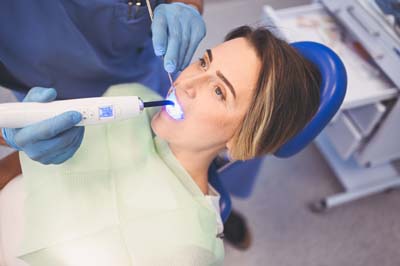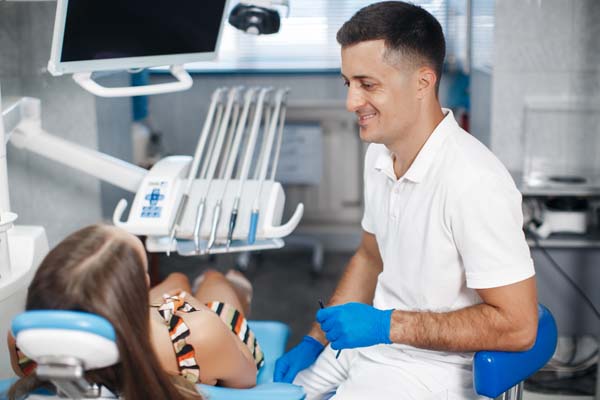An Implant Dentist in Livermore, CA Explains Tooth Replacement

As an implant dentist in Livermore, CA, we target the most vital, and usually under-recognized, part of the tooth. The root has a unique and symbiotic relationship with the jawbone. When you lose a tooth, this relationship is severed, and can lead to additional problems with the jawbone itself. Additionally the root of the tooth is designed to hold the tooth in place, providing it with strength and stability. A tiny titanium screw dental implant can replicate all of this functionality for your new dental crown that looks like a real tooth. People have varying reasons for seeing an implant dentist in Livermore, CA. Some need to have a new tooth for the first time, whereas others are seeking a better prosthetic solution than the one they already have. Each patient has their own reasons for wanting dental implants, which range from needing an easier solution to clean to not wanting to worry about removing or replacing their teeth all the time. Ultimately dental implants are about ensuring that you have a working tooth that looks great, and enhances your quality of life by not making you worry about the food you eat or if you are going to lose the tooth to a particularly juicy steak.
As an implant dentist in Livermore, CA, we specialize in providing you with a perfect long lasting solution to tooth loss. We have found that more and more of our patients are coming into the clinic with, at least, a rudimentary understanding of what dental implant is. This is a great place to start and gives our team the opportunity to identify you needs and find out how dental implants can meet your goals. There are also many aspects of implant dentistry that patients will not find easily on the internet. For example, most of our patients are unaware that there are two different kinds of implants. The first goes into the actual jawbone and is called an Endosteal implant while the second sits above or rests on top of the jawbone and is known as a Subperiosteal implant. An Endosteal implant is more traditional, using a cylindrical titanium implant which is placed directly into the jawbone. A Subperiosteal implant is used when there is simply not enough bone mass, or density, in the jawbone to support a traditional implant. Each of these provides the required strength and stability for the forthcoming crown.
There are two different methodologies that are used extensively when it comes to placing dental implants. In a one-step placement, the dentist covers the implant with tissue and allows it to heal naturally. With a two-step placement, the dentist places a healing abutment over the protrusion, and this allows the tissue and bone to heal around the abutment. Every implant has a small protrusion that comes out from the gum so that the dental crown, or replacement tooth, can be fitted on top of it. Healing from a dental implant placement takes between four and six weeks, after which we can place your new crown to complete the look.
Cosmetic Dentist in Livermore CA > Teeth Whitening in Livermore CA

